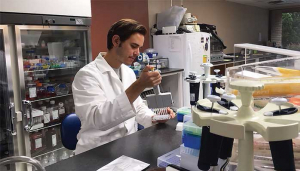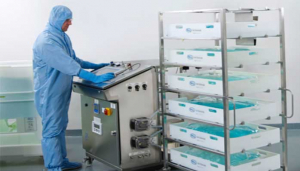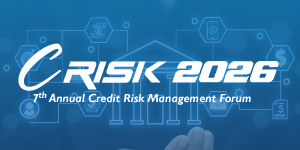Free knowledge to monitor the world of events. Have a look at our must read Blogs on Pharma, Finance, HR, Health and Cross Industry.
Viral Clearance Methodologies
2022-04-12
Chemical contaminants, bacteria and fungi, and viruses all pose threats to biological and biotechnological goods. Transmission of viral infections is a genuine possibility with these items.
Raw materials, cell culture methods, bioreactor contamination, and downstream processing can all be affected by viral infection. Pharmaceutical companies must practice viral safety and incorporate virus clearance into the manufacturing process for these reasons.
Viruses are made up of DNA or RNA that is encased in a protein sheath. Viruses can be encased in an envelope comprised of proteins, carbohydrates, and lipids, or they can be free-floating. In most viral clearance studies, non-enveloped viruses are the most difficult to eliminate.
What are the products that require virus protection?
- Products derived from the in vitro cultivation of animal or human cell lines.
- Products derived from cell line culture in vivo.
- Human organs and tissues are used to make these products.
- Blood or other human fluids are used to make these products.
Viruses are discovered several years after a batch of vaccinations is manufactured. As a result, while product testing can support control efforts by indicating that the risk of viral contamination is low, viral clearance processes and risk assessment provide a higher level of confidence.

Virus Threats
At several phases during the production process, pathogenic viruses pose a threat to biologics. However, there is a chance of viral risks:
- Animal-derived additives like bovine serum albumin are among the incoming materials and contaminated excipients. Many cases of viral contamination are caused by the use of components that aren't well-characterized.
- Cell line contamination.
- Reagents for purification and formulation.
- Impurities present in the process lead to viral stability.
- Controls within a viral secure area fail.
- Contamination of a production system by accident.
It's possible that you'll get infected with a virus or that you'll be at a higher risk of getting infected with a virus if:
- There are changes in essential process parameters that affect the safety profile.
- Virus detection devices that fail to identify low amounts of viruses.
- Data errors.
- Viral threats that are new and emerging.
It's not enough to just be aware of the dangers when it comes to manufacturing. A formal risk management approach is required to identify these hazards. HACCP (Hazard Analysis and Critical Control Points) style procedures are optimal for risk assessment.
Viral Clearance
For viral clearance, pharmaceutical process controls must be implemented. There are 2 methods those are Viral inactivation and Viral removal. It's critical that viral clearance be demonstrated in validation tests. The goal of these tests is to see if the manufacturing process can clear (inactivate or remove) identified viral contamination. Furthermore, such investigations evaluate the production process's resistance to unknown viruses as well as the equipment's cycle life. Viral filters can be blocked by denatured and aggregated proteins, or chromatography column material can stop working after several cycles. As a result, evaluating the technology employed in the production process is critical.
Viruses used in virus validation tests will vary depending on the type of product, method, and regulatory requirements. The user must determine the appropriate level of virus removal (as per logarithmic reduction). Using enveloped and non-enveloped viruses, as well as viruses of various shapes, is an excellent idea.

Filtration of viruses
Filter design has progressed in the field of viral filtration. Virus filtering is usually accomplished through direct flow, and today's well-designed filters allow for quick performance while yet capturing viruses effectively. An orthogonal removal mechanism is featured in a recent design. Higher area filters are a future development. Increased flow rates and throughputs are possible with them.
With completely automated, single-use systems, progress has been made. These disposable technologies provide the benefits that single-use technology brings to the production process, such as reduced energy usage and the elimination of cleaning validation difficulties. Clean-in-place technologies can help fixed systems with bigger size turnaround between products. The virus filter you use must be reliable and able to handle a reasonable amount of time.
Viruses pose a threat to biologic goods, and the ramifications of these threats have been examined in this article. As a result, the necessity of process controls and the targeting of controls through risk assessment has been highlighted in the article. The dual processes of viral elimination and inactivation are used to maintain control. In addition, the essay has emphasized relevant methods and approaches.
Do you want to understand more about Viral Clearance Methodologies in Pharma? Join us at the Viral Clearance Online MasterClass for European region on 30th to 31st May, 2022 and Viral Clearance Online US MasterClass for USA region on 03th to 04th October, 2022.
By Fazmi Zakam, SEO Executive, GLC Europe, Colombo Office, Sri Lanka.
Get a feel for our events

Training Program for CMC Leaders - EU edition
27th October 2025 - 16th January 2026
Rich with practical insights and real-world applications
learn more >>
Training Program for CMC Leaders - US edition
27th October 2025 - 16th January 2026
Rich with practical insights and real-world applications
learn more >>
Mastering the Common Technical Document (CTD) for Biologics Masterclass - EU edition
12-16 January, 2026
From guidelines to submissions
learn more >>














